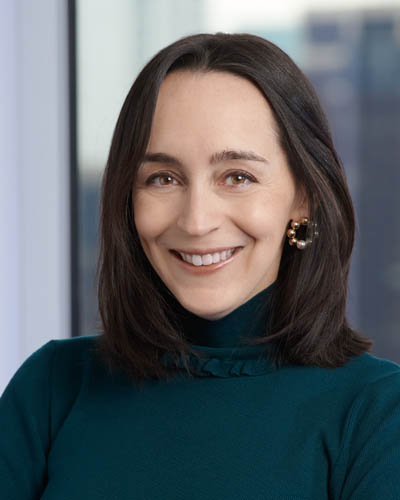In this Ropes & Gray podcast, asset management partners Lindsey Goldstein and Isabel Dische provide a snapshot of recent developments in the fundraising market for secondaries funds, and discuss how some trends with deal activity in the secondaries market may influence fundraising in this sector over the months ahead.
Transcript:
Lindsey Goldstein: Hello, and thank you for joining us today on this Ropes & Gray podcast, the latest in our series of podcasts and webinars focused on topics of interest for asset managers and institutional investors. I’m Lindsey Goldstein, an asset management partner based in New York. I’m joined today by my partner Isabel Dische, co-head of our institutional investor practice. Today, we are going to provide a snapshot of recent developments in the fundraising market for fund-of-funds and secondaries funds and discuss how some trends with deal activity in the secondaries markets may influence fundraising in this sector over the months ahead.
The past 18 months have seen a steady march of very large flagship secondaries funds being brought to market, with both seasoned secondary buyers and a number of new market entrants raising record levels of capital. According to Prequin, private equity secondaries buyers raised over three times as much capital in 2020 as they had in 2019. The bulk of this capital has been focused on traditional PE secondary strategies, but we’ve also seen a number of sponsors launch more focused strategies, such as funds focused on credit secondaries.
Isabel Dische: The sheer volume of capital being raised is impressive—the number of new market entrants is perhaps even more notable. Not only have we seen a number of large asset managers add secondaries strategies to their platforms, whether by acquisition of an existing secondaries adviser or by hiring teams, but we also have seen a number of new entrants raising funds targeted at smaller deals. One interesting question for these managers (as well as for their investors and the funds in which they are investing) is how best to handle conflicts and information flows as between the secondary platform and the other teams within the franchise. This is not one-size-fits-all, and we are seeing different sponsors take very different approaches to these questions.
As an aside, this trend toward new market entrants is also one we’ve seen in other areas of the secondaries markets, with a number of placement agents and law firms trying to break into the market (sometimes introducing an element of deal uncertainty as they do so).
We are also seeing established secondaries buyers expand their “sandboxes” as they look for new avenues to alpha—for example, funds that have historically focused on LP portfolios that have expanded into fund recapitalizations, and private equity secondaries firms have started exploring dedicated credit secondaries and/or single asset recapitalization strategies.
Lindsey Goldstein: Yes—we have fielded a lot of questions from my secondary fund sponsor clients about how they can expand the definition of “what is a secondary” as they bring new products to market. Investors have generally been receptive to these shifts, perhaps primed by the returns they’ve seen secondaries funds achieve in recent years.
In tandem with general receptivity to expanding the definition of “what is a secondary,” we are also observing a slightly opposite trend—increased interest in more focused secondaries strategies, such as credit. In many cases, we have seen established LPs ask the secondaries sponsors with which they have invested to pursue these more focused strategies in a dedicated fund of one.
Isabel Dische: That makes sense, given market dynamics. For example, with the dramatic growth in the single asset recap market—I’ve heard estimates that market volume for single asset deals in 2021 could be ten or even fifteen times as high as only a few years ago—it can be increasingly challenging to line up buy-side capital, and there can be similar concerns within other sectors of the market—for example, with credit secondaries that may not meet the typical targeted return profile for a flagship PE secondaries fund.
Lindsey Goldstein: Exactly. These more bespoke secondaries strategies are one way market participants are trying to capitalize on such opportunities. These more specialized products may have different return profiles, bringing more potential opportunities in scope. The economic terms of these more focused strategies often differ from those of the flagship private equity strategies, for instance, by reflecting the economics of the underlying asset class.
In terms of the LP makeup, we’ve seen interest in these strategies driven primarily by larger LPs who already have exposure to the secondaries markets more generally and were looking to grow that exposure, but now are starting to see that these bespoke products are becoming more mainstream, much like the flagship secondaries funds from which they have evolved.
Isabel Dische: Another trend we’ve observed on the deal-side is geographic expansion. For example, we’ve seen a notable uptick in fund recapitalizations in Asia, following a trend we’ve seen in the past few years of increased deal flow with LP portfolio deals in Asia. In your experience, Lindsey, is that matched by a geographic expansion in the investor base for these funds?
Lindsey Goldstein: We certainly do see global interest in secondaries products, including these more targeted strategies. And looking ahead, we expect continued high demand for secondaries funds as part of limited partners’ overall alternatives portfolio. It is most certainly an exciting time to be in the secondaries space.
Thank you, Isabel, for joining me today for this discussion. And thank you to our listeners. For more information on the topics that we’ve discussed or other topics of interest to the asset management industry, please visit our website at www.ropesgray.com. And of course, we can help you navigate any of the topics we discussed—please don't hesitate to get in touch. You can also subscribe and listen to this series wherever you regularly listen to podcasts, including on Apple and Spotify. Thanks again for listening.
Speakers
Stay Up To Date with Ropes & Gray
Ropes & Gray attorneys provide timely analysis on legal developments, court decisions and changes in legislation and regulations.
Stay in the loop with all things Ropes & Gray, and find out more about our people, culture, initiatives and everything that’s happening.
We regularly notify our clients and contacts of significant legal developments, news, webinars and teleconferences that affect their industries.




